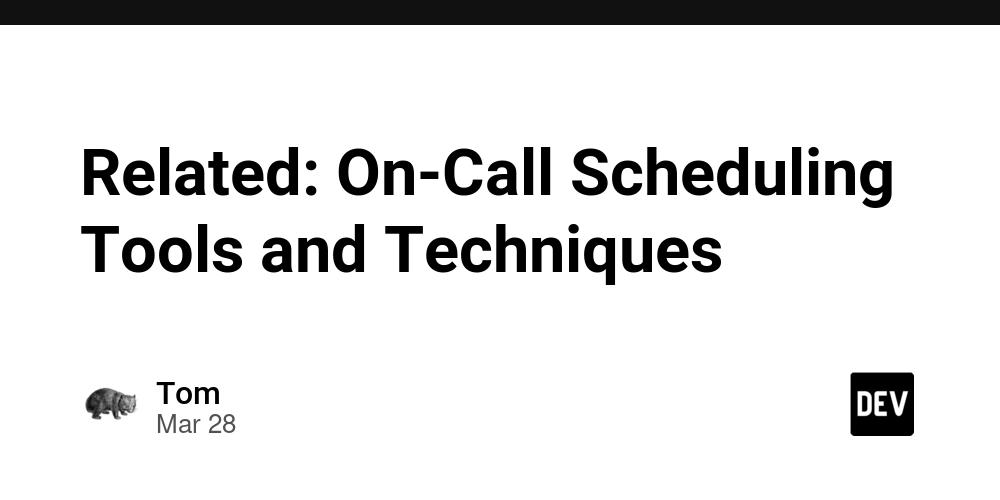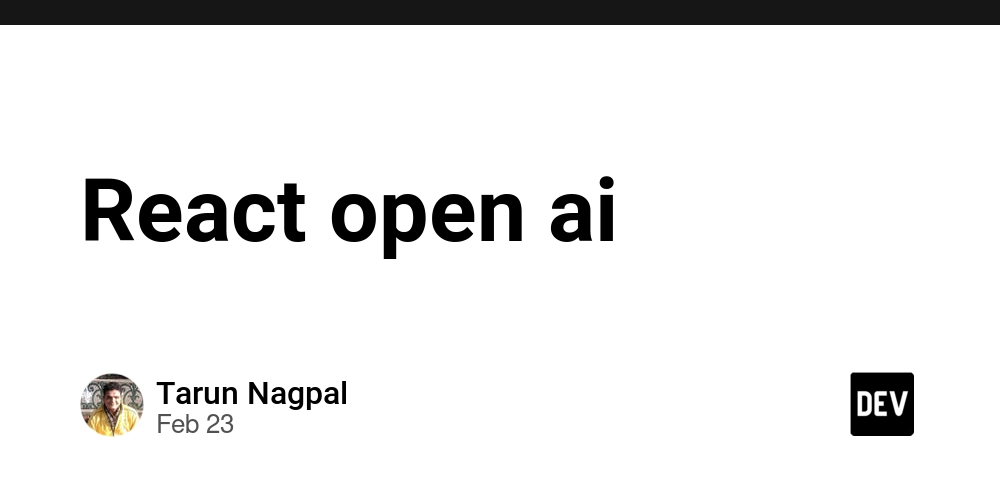Related: On-Call Scheduling Tools and Techniques
Untitled The 3 AM alert. The vacation interruption. The "quick fix" that turns into a four-hour debug session while your dinner gets cold. If you've ever been on-call, you know these situations all too well. The harsh reality is that unsustainable on-call practices are driving burnout across our industry, with many engineers quietly looking for roles that don't involve carrying a pager. But it doesn't have to be this way. Let's look at how to build on-call rotations that actually work for both the business and the humans involved. The Hidden Cost of Poor On-Call Practices Before we dive into solutions, let's be honest about the real cost of dysfunctional on-call systems: The Impact of Poor On-Call Practices: 1. Burnout → Team attrition → Knowledge loss → More incidents 2. Alert fatigue → Missed critical issues → Longer outages 3. Unpredictable interruptions → Context switching → Reduced productivity 4. Work dread → Decreased morale → Lower code quality I've seen engineers leave great companies simply because the on-call burden became unbearable. When a single person becomes the "hero" who handles most incidents, you've created a single point of failure - both for your systems and your team. Building On-Call Rotations That Actually Work A well-designed on-call rotation distributes the workload fairly while ensuring systems stay up. Here's how to set one up effectively: 1. Assess Your Actual Coverage Needs Not every system needs 24/7 coverage. Be realistic about your requirements: # Ask these questions for each system Business_critical=$( [[ $revenue_impact_per_hour -gt 1000 ]] && echo "true" || echo "false" ) Customer_facing=$( [[ $users_affected -gt 0 ]] && echo "true" || echo "false" ) Regulatory_requirement=$( [[ $compliance_required == "yes" ]] && echo "true" || echo "false" ) if [[ $Business_critical == "true" && $Customer_facing == "true" ]]; then echo "24/7 coverage justified" elif [[ $Regulatory_requirement == "true" ]]; then echo "Coverage per regulatory requirements" else echo "Business hours coverage may be sufficient" fi For many services, having someone on-call during extended business hours and handling other issues the next workday is perfectly acceptable, especially with reliable website uptime monitoring in place. 2. Design Humane Rotation Schedules The most sustainable schedules I've seen follow these patterns: Option A: Weekly Rotation ┌─────────┬──────────┬──────────┬──────────┬──────────┐ │ Week 1 │ Engineer │ Engineer │ Engineer │ Engineer │ │ │ A │ B │ C │ D │ ├─────────┼──────────┼──────────┼──────────┼──────────┤ │ Primary │ ✓ │ │ │ │ │ Backup │ │ ✓ │ │ │ └─────────┴──────────┴──────────┴──────────┴──────────┘ Option B: Follow-the-sun (Global Teams) ┌─────────────┬──────────┬──────────┬──────────┐ │ Region │ APAC │ EMEA │ US │ ├─────────────┼──────────┼──────────┼──────────┤ │ UTC 0-8 │ Primary │ Backup │ Off │ │ UTC 8-16 │ Off │ Primary │ Backup │ │ UTC 16-24 │ Backup │ Off │ Primary │ └─────────────┴──────────┴──────────┴──────────┘ Key considerations for any schedule: Maximum one week on-call at a time Adequate time between rotations (minimum 3 weeks) Clear handover process between shifts Backup person for escalation and support 3. Establish Clear Incident Response Workflows Create simple, clear playbooks that anyone on the team could follow: DATABASE CONNECTION FAILURES PLAYBOOK Initial Triage: 1. Check connection pool metrics $ curl -s monitoring.example.com/api/pools | jq '.["db-main"]' 2. Verify database health $ ssh jump-host "mysql -h db-main -e 'SELECT 1'" 3. Check for recent deployments or config changes $ git log --since="24 hours ago" --oneline configs/database/ Common Solutions: A. If connection pool exhausted: $ kubectl scale deployment api-service --replicas=2 B. If database CPU >90%: - Check for long-running queries - Consider read/write splitting C. If credentials expired: $ kubectl apply -f k8s/secrets/db-credentials.yaml These playbooks remove the guesswork during high-stress incidents and help spread knowledge across the team. 4. Implement Proper Tooling for Alert Management The right tools can dramatically reduce on-call pain: // Example alert de-duplication logic function processAlerts(alerts) { const groupedAlerts = {}; alerts.forEach(alert => { const key = `${alert.service}-${alert.errorType}`; if (!groupedAlerts[key]) { groupedAlerts[key] = { count: 0, firstSeen: alert.timestamp, alerts: [] }; } groupedAlerts[key].count++; groupedAlerts[key].alerts.push(alert); }); // Only send one notification per group return Object.values(groupedAlerts).map(group => ({ summary: `$

Untitled
The 3 AM alert. The vacation interruption. The "quick fix" that turns into a four-hour debug session while your dinner gets cold.
If you've ever been on-call, you know these situations all too well. The harsh reality is that unsustainable on-call practices are driving burnout across our industry, with many engineers quietly looking for roles that don't involve carrying a pager.
But it doesn't have to be this way. Let's look at how to build on-call rotations that actually work for both the business and the humans involved.
The Hidden Cost of Poor On-Call Practices
Before we dive into solutions, let's be honest about the real cost of dysfunctional on-call systems:
The Impact of Poor On-Call Practices:
1. Burnout → Team attrition → Knowledge loss → More incidents
2. Alert fatigue → Missed critical issues → Longer outages
3. Unpredictable interruptions → Context switching → Reduced productivity
4. Work dread → Decreased morale → Lower code quality
I've seen engineers leave great companies simply because the on-call burden became unbearable. When a single person becomes the "hero" who handles most incidents, you've created a single point of failure - both for your systems and your team.
Building On-Call Rotations That Actually Work
A well-designed on-call rotation distributes the workload fairly while ensuring systems stay up. Here's how to set one up effectively:
1. Assess Your Actual Coverage Needs
Not every system needs 24/7 coverage. Be realistic about your requirements:
# Ask these questions for each system
Business_critical=$( [[ $revenue_impact_per_hour -gt 1000 ]] && echo "true" || echo "false" )
Customer_facing=$( [[ $users_affected -gt 0 ]] && echo "true" || echo "false" )
Regulatory_requirement=$( [[ $compliance_required == "yes" ]] && echo "true" || echo "false" )
if [[ $Business_critical == "true" && $Customer_facing == "true" ]]; then
echo "24/7 coverage justified"
elif [[ $Regulatory_requirement == "true" ]]; then
echo "Coverage per regulatory requirements"
else
echo "Business hours coverage may be sufficient"
fi
For many services, having someone on-call during extended business hours and handling other issues the next workday is perfectly acceptable, especially with reliable website uptime monitoring in place.
2. Design Humane Rotation Schedules
The most sustainable schedules I've seen follow these patterns:
Option A: Weekly Rotation
┌─────────┬──────────┬──────────┬──────────┬──────────┐
│ Week 1 │ Engineer │ Engineer │ Engineer │ Engineer │
│ │ A │ B │ C │ D │
├─────────┼──────────┼──────────┼──────────┼──────────┤
│ Primary │ ✓ │ │ │ │
│ Backup │ │ ✓ │ │ │
└─────────┴──────────┴──────────┴──────────┴──────────┘
Option B: Follow-the-sun (Global Teams)
┌─────────────┬──────────┬──────────┬──────────┐
│ Region │ APAC │ EMEA │ US │
├─────────────┼──────────┼──────────┼──────────┤
│ UTC 0-8 │ Primary │ Backup │ Off │
│ UTC 8-16 │ Off │ Primary │ Backup │
│ UTC 16-24 │ Backup │ Off │ Primary │
└─────────────┴──────────┴──────────┴──────────┘
Key considerations for any schedule:
Maximum one week on-call at a time
Adequate time between rotations (minimum 3 weeks)
Clear handover process between shifts
Backup person for escalation and support
3. Establish Clear Incident Response Workflows
Create simple, clear playbooks that anyone on the team could follow:
DATABASE CONNECTION FAILURES PLAYBOOK
Initial Triage:
1. Check connection pool metrics
$ curl -s monitoring.example.com/api/pools | jq '.["db-main"]'
2. Verify database health
$ ssh jump-host "mysql -h db-main -e 'SELECT 1'"
3. Check for recent deployments or config changes
$ git log --since="24 hours ago" --oneline configs/database/
Common Solutions:
A. If connection pool exhausted:
$ kubectl scale deployment api-service --replicas=2
B. If database CPU >90%:
- Check for long-running queries
- Consider read/write splitting
C. If credentials expired:
$ kubectl apply -f k8s/secrets/db-credentials.yaml
These playbooks remove the guesswork during high-stress incidents and help spread knowledge across the team.
4. Implement Proper Tooling for Alert Management
The right tools can dramatically reduce on-call pain:
// Example alert de-duplication logic
function processAlerts(alerts) {
const groupedAlerts = {};
alerts.forEach(alert => {
const key = `${alert.service}-${alert.errorType}`;
if (!groupedAlerts[key]) {
groupedAlerts[key] = {
count: 0,
firstSeen: alert.timestamp,
alerts: []
};
}
groupedAlerts[key].count++;
groupedAlerts[key].alerts.push(alert);
});
// Only send one notification per group
return Object.values(groupedAlerts).map(group => ({
summary: `${group.count} similar alerts for ${group.alerts[0].service}`,
details: group.alerts[0],
count: group.count,
firstSeen: group.firstSeen
}));
}
Effective uptime monitoring systems should:
Group related alerts to prevent alert storms
Provide context to help troubleshoot
Have adjustable severity levels
Support snoozing and acknowledgment
Integrate with your chat/communication tools
5. Build Feedback Loops for Continuous Improvement
After each rotation, capture feedback systematically:
POST-ROTATION REVIEW TEMPLATE
Engineer: Alex Chen
Rotation Period: March 5-12, 2023
Incident Summary:
- Total alerts: 17
- False positives: 5 (29%)
- Major incidents: 1
- Total time spent: ~6 hours
Top Issues:
1. Payment API timeouts during traffic spike
2. CDN cache invalidation failures
3. Repeated Redis connection alerts (false positive)
Improvement Ideas:
- Add auto-scaling to payment API based on queue depth
- Create playbook for CDN cache invalidation issues
- Adjust Redis connection thresholds (too sensitive)
Personal Impact:
- Sleep interrupted twice
- Had to reschedule team meeting on Tuesday
Use this feedback to continuously refine your alerting thresholds, playbooks, and rotations.
Making On-Call Sustainable for the Long Term
Beyond the technical setup, these human factors are critical for sustainable on-call systems:
Compensate Fairly
On-call work deserves proper compensation, whether through:
Direct on-call pay
Comp time for after-hours work
Rotation bonuses
Additional PTO
A junior developer shared with me that their company offers an extra vacation day for each week of on-call - a simple but effective approach.
Build a Culture of Continuous Improvement
The best teams I've worked with follow this rule: "Every alert should only happen once."
Alert Post-Mortem Process:
1. Was this alert actionable?
→ If NO: Adjust threshold or remove alert
2. Was immediate human intervention required?
→ If NO: Consider delayed notification or auto-remediation
3. Did we have clear remediation steps?
→ If NO: Update playbook or documentation
4. Could this be prevented entirely?
→ Create ticket for preventative work
By treating every alert as an opportunity to improve your systems, you'll gradually reduce the on-call burden.
Respect Boundaries and Recovery Time
After a significant incident or a particularly disruptive on-call shift, ensure engineers have recovery time:
// Pseudocode for post-incident team management
if (incident.duration > 3_HOURS || incident.outOfHours) {
// Encourage taking the morning off after late-night incidents
suggestDelayedStart();
// Reschedule non-critical meetings
rescheduleNonEssentialMeetings();
// Consider moving deadlines if necessary
evaluateProjectDeadlines();
}
This isn't just nice to have—it's essential for preventing burnout and maintaining cognitive function.
Tools That Can Help
Several tools can help make on-call more manageable:
PagerDuty/OpsGenie: For alert management and escalation
Rundeck: For self-service remediation and runbooks
Bubobot: For free uptime monitoring with customizable alert thresholds
Bubobot’s Statuspage: For communicating incidents to customers and stakeholders
The most valuable features to look for are:
Intelligent alert grouping
Customizable notification rules
Escalation policies for unacknowledged alerts
Integration with your existing tools
The Bottom Line
Building sustainable on-call practices isn't just about being nice—it's a business imperative. Teams with well-designed rotations respond faster to incidents, retain institutional knowledge, and build more reliable systems over time.
Remember that the goal isn't zero incidents (that's unrealistic), but rather:
Fewer false alarms
More actionable alerts
Clearer resolution paths
Evenly distributed responsibility
Sustainable work patterns
By implementing the strategies outlined here, you can create an on-call system that keeps your services running without burning out your team.
How has your organization handled on-call rotations? What practices have worked well for your team?
For more detailed strategies on building effective on-call rotations and reducing alert fatigue, check out our comprehensive guide on the Bubobot blog.
SchedulingTools, #TeamManagement, #24x7Support
Read more at https://bubobot.com/blog/building-effective-on-call-rotations-to-maintain-uptime?utm_source=dev.to











































































































































































![[The AI Show Episode 142]: ChatGPT’s New Image Generator, Studio Ghibli Craze and Backlash, Gemini 2.5, OpenAI Academy, 4o Updates, Vibe Marketing & xAI Acquires X](https://www.marketingaiinstitute.com/hubfs/ep%20142%20cover.png)




























































































































![[DEALS] The Premium Learn to Code Certification Bundle (97% off) & Other Deals Up To 98% Off – Offers End Soon!](https://www.javacodegeeks.com/wp-content/uploads/2012/12/jcg-logo.jpg)


![From drop-out to software architect with Jason Lengstorf [Podcast #167]](https://cdn.hashnode.com/res/hashnode/image/upload/v1743796461357/f3d19cd7-e6f5-4d7c-8bfc-eb974bc8da68.png?#)








































































































.png?#)

































_Christophe_Coat_Alamy.jpg?#)
 (1).webp?#)





































































































![Apple Considers Delaying Smart Home Hub Until 2026 [Gurman]](https://www.iclarified.com/images/news/96946/96946/96946-640.jpg)
![iPhone 17 Pro Won't Feature Two-Toned Back [Gurman]](https://www.iclarified.com/images/news/96944/96944/96944-640.jpg)
![Tariffs Threaten Apple's $999 iPhone Price Point in the U.S. [Gurman]](https://www.iclarified.com/images/news/96943/96943/96943-640.jpg)




































































































































